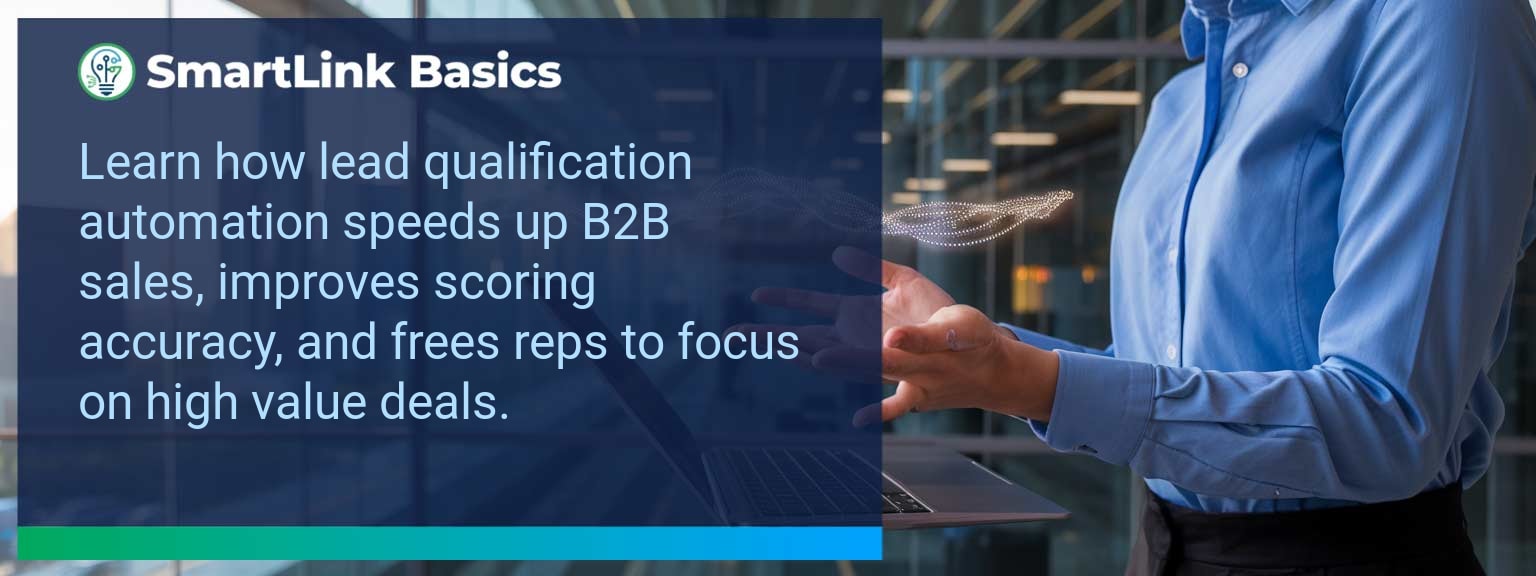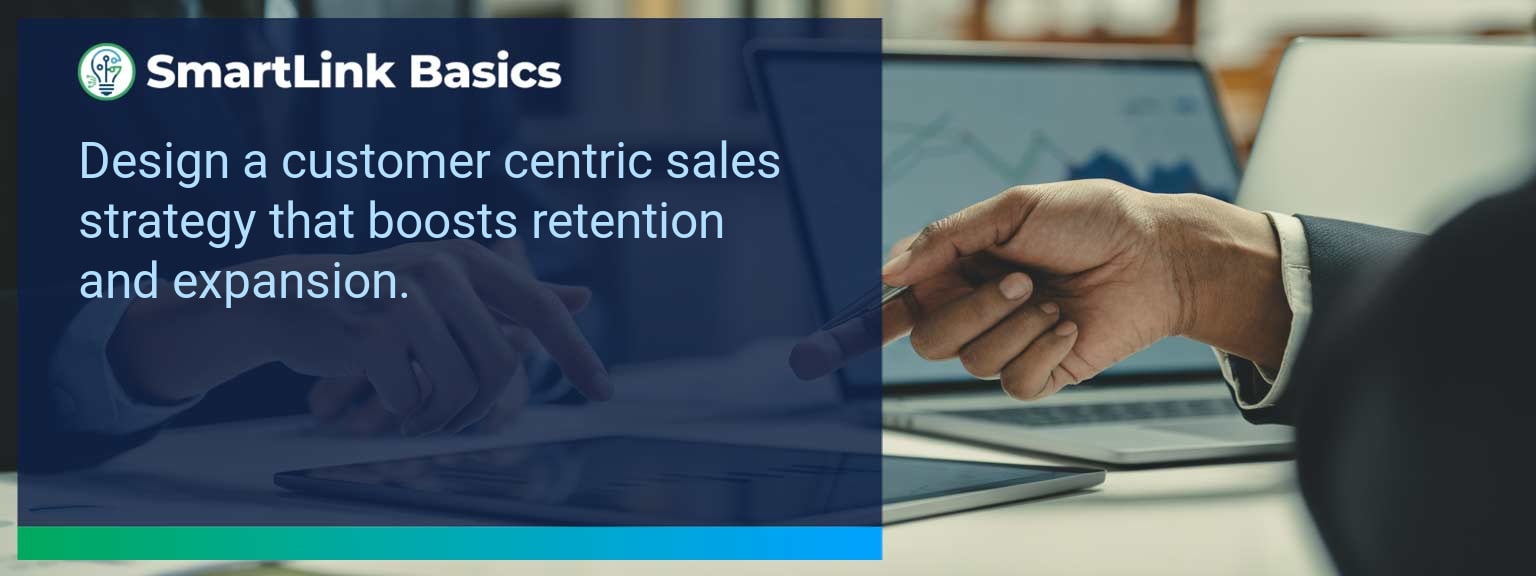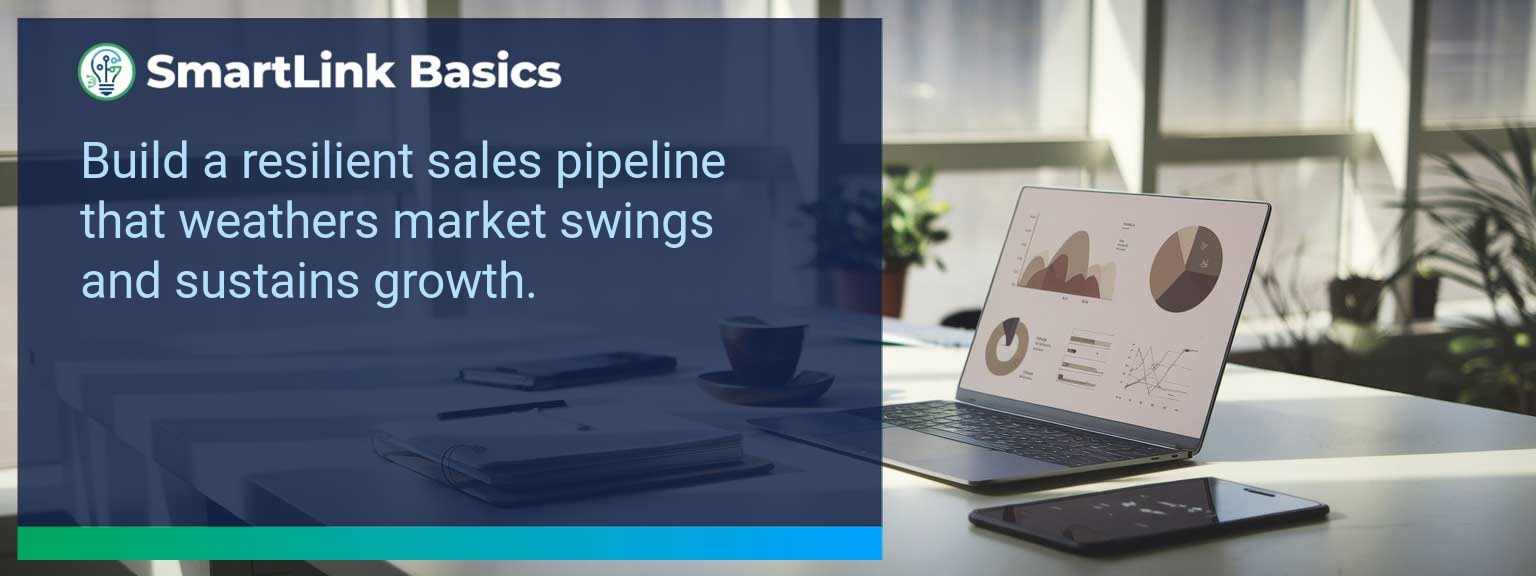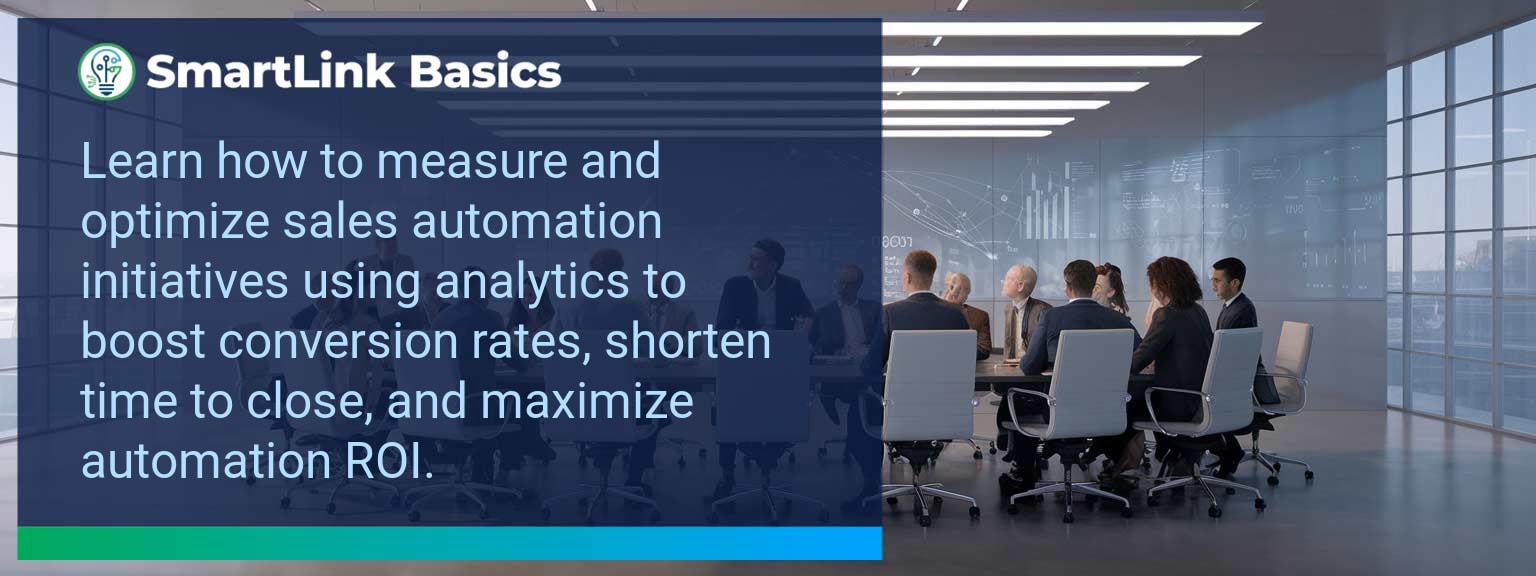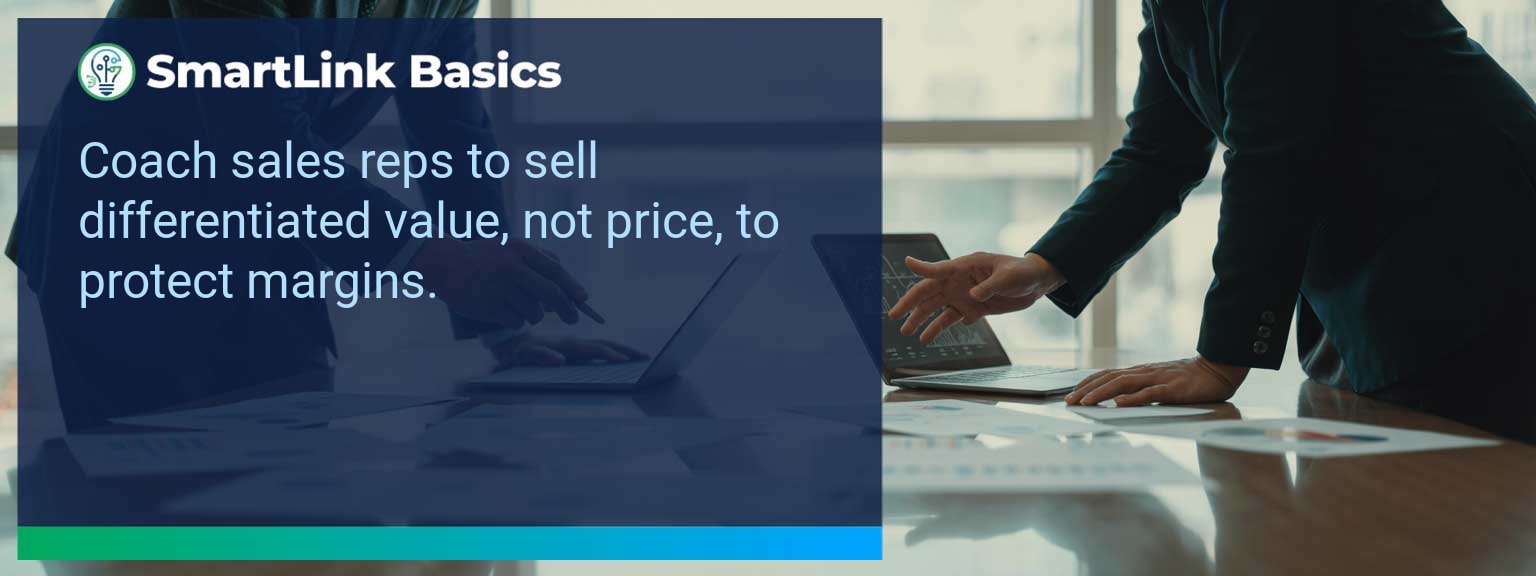Industry data shows that organizations adopting AI-driven automation achieve cost reductions of up to 30% while accelerating sales cycles by 20% or more (McKinsey, 2024). For sales leaders, AI automated workflows now define competitive advantage, enabling teams to reallocate time from repetitive tasks to high-value engagements. At SmartLink Basics, we help decision-makers implement these systems strategically, ensuring they integrate with existing revenue operations. In this article, you’ll see how AI automated workflows power business outcomes, the common obstacles that slow adoption, and practical steps to optimize processes. You’ll walk away with proven examples, a 90-day action blueprint, and measurable KPIs to track results.
- Automate repetitive administrative and CRM updates with AI.
- Integrate machine learning to personalize outreach at scale.
- Streamline approvals, quotes, and contract workflows for speed.
- Use predictive analytics to prioritize sales opportunities.
- Track adoption and performance with targeted metrics.
AI Automated Workflows: What Changed and Why It Matters
AI adoption has shifted from experimental to operational, making automated workflows a standard in high-performing sales organizations. The real advantage lies in combining workflow automation with artificial intelligence workflows to optimize every step of the revenue process. Sales leaders now use AI to synchronize touchpoints, reduce manual inputs, and ensure faster execution. For example, a B2B SaaS leader introduced automated lead enrichment and routing, cutting qualification time by 60%. Actionable insight: Audit processes for time-intensive handoffs and apply AI where repeatability is high.Redesign the Revenue Operating System With AI Automated Workflows
ICP, Segmentation, and Targeting AI-enabled segmentation uses historical wins, firmographic, and behavioral data to dynamically update ICP profiles. This ensures targeting precision without quarterly re-work. Pipeline Architecture Automated workflows push opportunities through the right stages based on engagement signals. AI flags at-risk deals for intervention. Plays and Messaging Integrated automation tools deliver personalized sequences based on buyer activity, increasing relevance at every touchpoint. Operating Cadence AI schedules follow-ups, forecast calls, and account reviews based on actual pipeline movement rather than static calendars. Actionable insight: Implement automation that adapts in real-time to both internal and buyer-driven events.Common Obstacles To Achieving Seamless Automation
The most frequent challenges are fragmented systems, inconsistent data quality, and cultural resistance. Without a unified data layer, automation amplifies errors rather than solving them. Coca-Cola Europacific Partners reported needing a full data governance upgrade before AI could improve sales workflows. Leaders must first assess infrastructure readiness and train teams to trust AI-influenced recommendations. Actionable insight: Before deployment, establish clean data practices and a single source of truth.Implementing AI To Optimize Workflows
Effective deployment of AI process optimization starts with mapping current-state processes, identifying friction points, and matching them with automation tools. For example, automating proposal generation based on CRM opportunity data can reduce turnaround from three days to one hour. Solutions combining business process automation platforms with machine learning integration enable continuous performance improvement. Actionable insight: Pilot in one high-impact stage, measure, and then expand.Tangible Benefits From Automated Processes
The benefits extend beyond time savings — sales leaders gain a scalable system. Tangible outcomes include faster quote-to-close, higher lead conversion, and better forecast accuracy. A manufacturing firm implemented AI-assisted order processing and cut errors by 40%, improving on-time delivery rates. Actionable insight: Track both speed and accuracy to measure workflow automation effectiveness.Metrics That Matter
| Category | Metric | Definition | Target |
|---|---|---|---|
| Leading | Workflow Completion Rate | % of automated sequences executed without manual intervention | 95%+ |
| Leading | AI Suggestion Adoption Rate | % of AI-generated action recommendations executed by reps | 80%+ |
| Lagging | Cycle Time Reduction | Decrease in time from lead entry to closed-won | 20%+ |
| Lagging | Revenue Per Rep | Average sales revenue generated per sales rep per quarter | +15% YoY |
| Quality | Automation Error Rate | % of workflows that trigger incorrect outcomes | <1% |
| Quality | Customer Satisfaction Post-Automation | Average CSAT score after automation implementation | ≥ 4.5/5 |
Innovations And Next Steps For AI Automation
Emerging capabilities like AI-generated playbooks, intent-driven dynamic routing, and integrated AR for virtual product demos are shaping the next wave of sales automation. Companies integrating these tools early will outpace competitors in speed and personalization. Actionable insight: Stay ahead by testing emerging automation features quarterly and aligning them with evolving buyer expectations.Get the 90-day plan, coaching rubric, and dashboard template to operationalize AI in your enablement program.
Turning AI Automation Into a Revenue Multiplier
AI automated workflows are now a strategic lever for predictable, scalable growth. This guide outlined current applications, adoption challenges, a 90-day execution plan, and measurable success criteria. To make automation pay off, sales leaders should integrate tools into one cohesive operating system and review results monthly for continuous improvement. Access more AI-driven sales enablement resources from SmartLink Basics to design a high-performance automation strategy. Strong sales leadership is directly linked to sustained revenue growth and high-performing teams. Yet, many leaders underestimate the discipline required to balance personal development with the demands of coaching, motivating, and empowering sales teams. At SmartLink Basics, we see consistent patterns among top-performing leaders: they treat leadership as a repeatable system rather than a series of ad-hoc decisions. This article breaks down actionable sales leadership strategies proven to enhance team results without sacrificing your own growth as a leader. You will discover ways to improve sales performance, manage burnout risk, and prepare for future challenges, while keeping your team focused on ambitious but achievable sales targets.- Define and communicate a clear sales vision and revenue framework.
- Prioritize coaching and team capability building over micromanagement.
- Leverage a consistent operating cadence for accountability.
- Balance strategic planning with personal leadership development time.
- Continuously measure and refine sales performance drivers.
Common Struggles Faced By Sales Leaders
Sales leaders often find themselves managing both immediate revenue pressures and long-term team development. The urgency of hitting quarterly targets can overshadow investments in coaching and skill-building. Team motivation may falter when leadership energy is consumed by administrative or operational firefighting. For example, a VP of Sales may spend up to 60% of their week in internal meetings, leaving little time for pipeline reviews, field coaching, or competitive strategy sessions — activities that directly drive revenue. Recognizing these constraints is the first step toward realigning focus.Implementing Effective Sales Leadership Strategies
Adopting effective sales leadership strategies requires a structured approach rooted in clarity and operational discipline. The strategy should align target markets, value propositions, and team enablement resources with measurable outcomes. A well-defined revenue framework includes clear Ideal Customer Profiles (ICP), strategic segmentation, and targeted messaging. For instance, one sales director reduced cycle length by 18% after refining ICP definitions and aligning sales plays with high-value accounts. Actionable step: Define three non-negotiable priorities for your sales team each quarter, align all activities to these, and eliminate non-value tasks.Measurable Improvements In Sales Performance
Top sales leaders use data to guide decisions rather than relying on intuition alone. Defining the right leading and lagging metrics ensures visibility into both current performance and future pipeline health. By creating a simple scorecard that measures call quality, opportunity progression, and win rates, leaders can identify bottlenecks early and intervene with targeted coaching.| Category | Metric | Definition | Target |
|---|---|---|---|
| Leading | Pipeline Coverage | Value of open pipeline compared to quota | 3x quota |
| Lagging | Win Rate | Closed-won deals as a percentage of total deals | 30%+ |
| Quality | Call Effectiveness | Percentage of calls advancing deals to next stage | 70%+ |
Preparing For Future Sales Leadership Challenges
Sales leadership will become more data-driven, customer-centric, and change-oriented in the coming years. Leaders who invest now in scalable processes, adaptive coaching models, and continuous learning cultures will position their teams for sustained success. Scenario planning, robust onboarding for new hires, and cross-functional leadership alignment will be critical for navigating competitive and market changes. Build flexibility into your operating cadence so you can pivot without disrupting momentum.Get the 90-day plan, coaching rubric, and dashboard template to operationalize AI in your enablement program.




